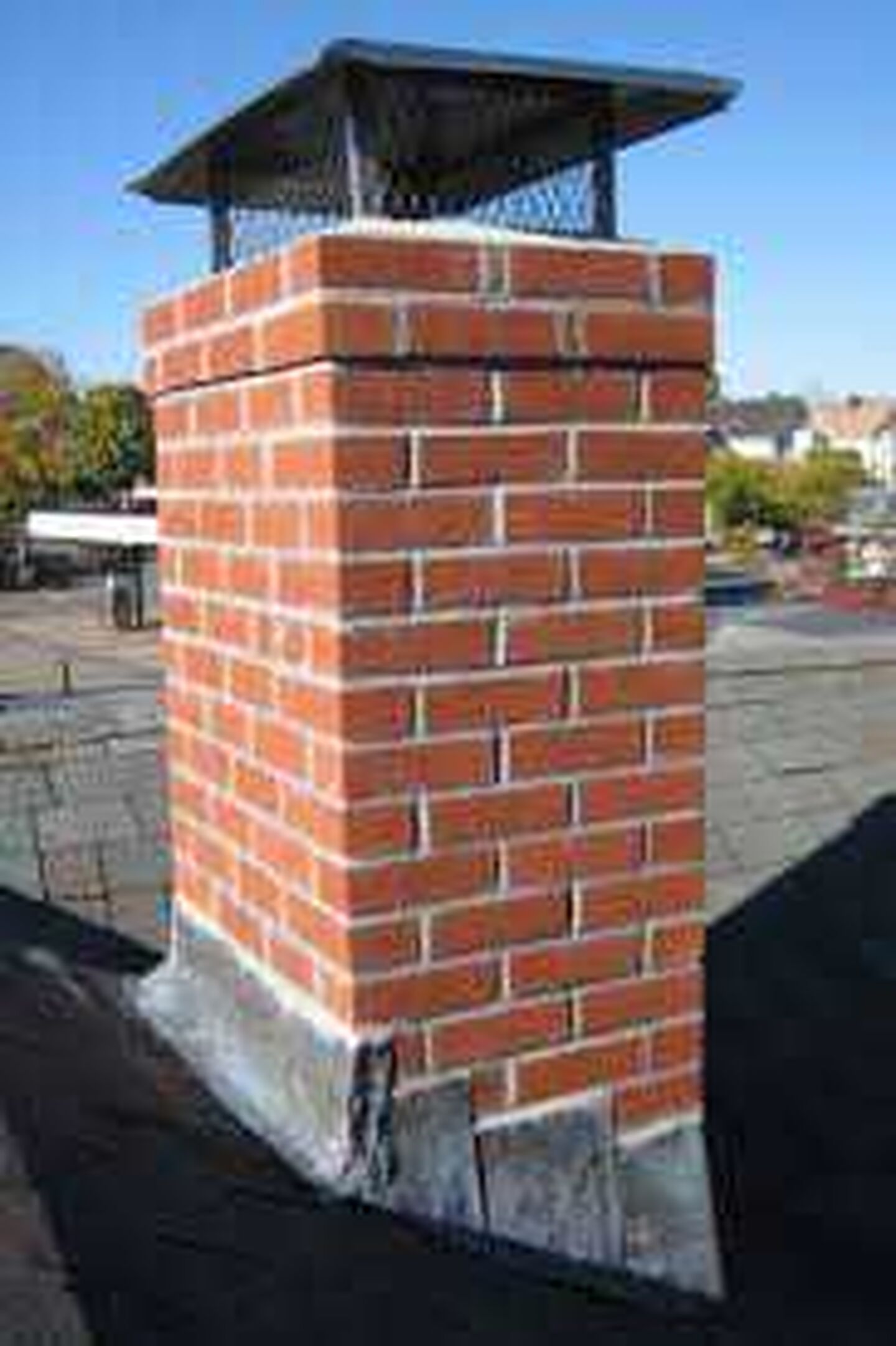How to Waterproof a Leaking Chimney

Unless located in the tropics where home heating is unnecessary and fireplaces unheard of, almost every house has a chimney of some type.
Homes with fireplaces have a chimney to vent them and the whole assembly extends into the basement (or crawl space) to accommodate an ash pit and clean-out below the hearth.
Homes with central heating powered by fossil fuels like natural gas or fuel oil have chimneys that are typically outside the foundation and are used to vent the by-products of combustion.
In either case, a chimney can leak water into the house and the source of the water can be either above or below ground.
Leaking Chimneys – Aboveground Sources of Water
Either type of chimney is typically made of brick with either a metal or terra cotta liner. Brick chimneys can leak water from a number of aboveground sources:
Mortar joints – The mortar joints between bricks can crack and deteriorate over time and these damaged joints will admit water easily, especially in an area prone to wind-blown rain. These leaks can be stopped by having the chimney tuck-pointed to restore the mortar.
Missing Chimney Cap – If a chimney has no cap, there is nothing to prevent rain and snow from entering the chimney. Installing a chimney cap made from stainless or galvanized steel forms a roof over the chimney with ample room underneath for ventilation. Many also feature an open mesh or grid below to keep out animals, birds and debris.
Cracked Chimney Crown – When a brick chimney is built, it is sealed with a mortar “crown” that covers the top course of brick and meets the liner. If the mortar cracks, as is fairly common, it can admit water.
Chimney Flashing – At the place where the roof meets the chimney, sheet metal flashing is used to deflect water from the opening. If the flashing was improperly installed or has separated from the chimney, water can seep in and the flashing must be repaired or replaced.
Leaking Chimneys – Belowground Sources
A chimney that sits outside the home’s foundation is built on its own footing and in many ways resembles a mini-basement. It is similarly susceptible to seepage problems that will eventually produce water in the adjoining basement or crawl space and can be repaired with basement waterproofing techniques.
When seepage from a belowground chimney is suspected, a basement waterproofing professional will conduct a “hose test,” running water around the base of the chimney and watching for seepage on the interior.
Mortar Joints – Just like a basement formed by a masonry foundation, the below ground portion of a chimney can admit water through cracked or deteriorated mortar joints.
Porous Brick – Brick, like concrete block, is a porous building material and can, over time, seep water into the base of the chimney through absorption.
In either of these cases, seepage can be stopped by installing a subsoil waterproofing membrane, which is a thick coating of asphalt-modified polyurethane that is applied to the exterior of the belowground portion of the chimney with a trowel. The membrane forms an impenetrable barrier against water.
Seepage between Footing and Wall – Just like a basement with a cove joint, a belowground chimney is susceptible to water forced in between the footing and first course of brick by hydrostatic pressure.
This form of seepage can be prevented or repaired by installing interior drain tile, a system of perforated pipe buried in a bed of washed gravel even with the footings. The pipe alleviates hydrostatic pressure and carries the water to a sump pump for removal.
In any event, a homeowner who suspects that a chimney may be the source of basement seepage is wise to consult a basement waterproofing professional to determine whether the source is above or below ground.
At U.S. Waterproofing, our experienced basement waterproofing advisors will be able to recommend a repair for belowground problems and we will complete the work in a timely and cost-effective manner, just as we have done for more than 300,000 homeowners since 1957. So, why not ask for our free advice?




